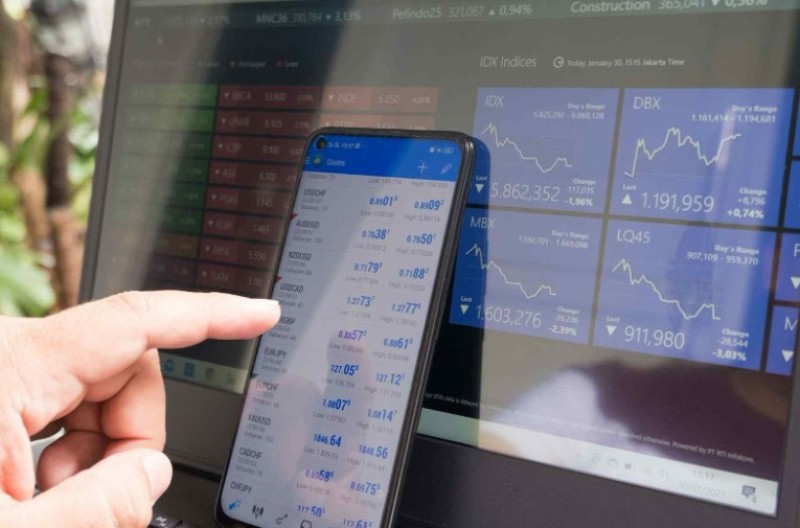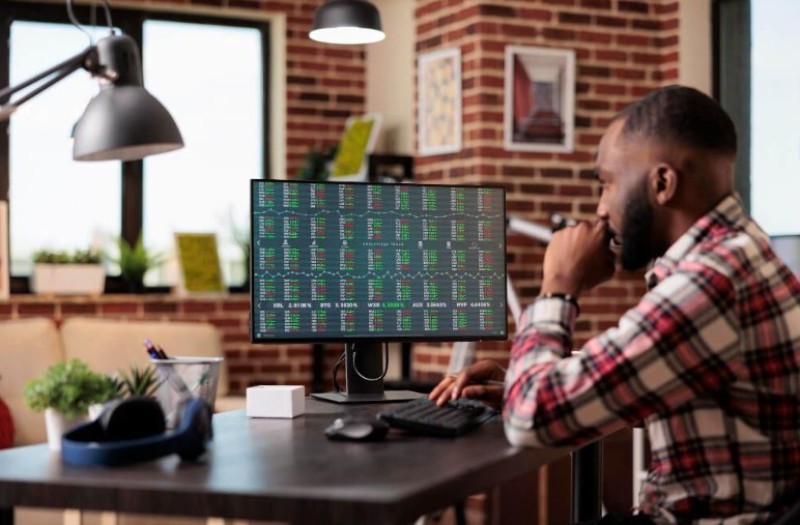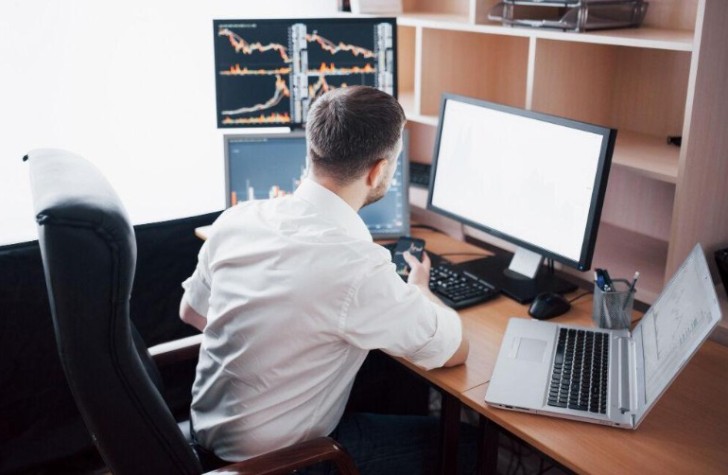Pro traders are the top 20% performers in the forex market, usually recording more consistent profits than regular traders. They succeed because they use the right tools and follow proven strategies. Learning what these tools are can help you trade better and make smarter decisions. This article explores major tools to power up your trading like a pro.
Trade Like a Pro
Here's a list of the most essential tools to build your trading arsenal:
1. Charting Tools
The most important factor that determines how skilled a trader becomes is the ability to read trading charts. While there are many options to choose from, TradingView is popular among many pro traders for several reasons. First, it gives access to price charts across various financial markets, including stocks, bonds, forex, indices, and cryptocurrency markets. Most brokers usually offer a simple charting interface, but many give users the option to switch to an advanced charting tool like TradingView.
With TradingView, you can use Pine Script to build your own technical indicators and build a trading system that works for you. You can also switch between different chart types like candlestick, bar, line, Renko, and Heikin Ashi charts. However, if you aim to trade using the most popular trading strategy, the ICT methodology, candlestick charts are the most efficient for price trend analysis.
2. Timeframe Trading Tools
Pro traders usually trade different time frames for specific reasons and open trades in specific regional sessions. Many professional traders in Asia rely on TradingView Singapore to trade the Tokyo session in real time while still gaining full access to the global market. These expert traders use the 24-hour timeframe to define what the daily bias and market structure are.
Using a top-down analysis, their next focus would be to identify order blocks and fair value gaps in the 4-hour time frames. The lower time frames, usually between 15 minutes and 1 minute, are where pro traders target to get entries. Using TradingView, you can access price charts down to a second interval for sniper-level entries. You can also use the session volume, session range, time zone session overlay, and other timeframe indicators to gather additional information when trading different sessions.
3. Drawing Tools

Another important aspect that can power up your trading is how you use drawing tools. Your chart can look busy, and you still end up with bad trades. However, when you're able to mark out key market structure points accurately, it makes all the difference. TradingView has a vast library of drawing tools, but the ones you need to focus on are:
- the horizontal line to mark the support and resistance zones and also sell- and buy-side liquidity,
- trend lines to track market structure shifts,
- the Fibonacci retracement tool to identify discount and premium levels,
- rectangles to define the fair value gaps, and
- time markers to track different sessions, like the New York or Asian trading sessions.
Knowing which tools to track which element is just the beginning. Using drawing tools like a pro requires a nuanced understanding you'll only get through practice. You'll have to learn to color-code your drawings for more visual clarity, set up multiple tools, and annotate charts for journaling purposes. One feature peculiar to TradingView charts is the smart alerts option. You can set alerts and notifications for when the price reaches a particular level or when a trend line breaks, so you can make your next move without missing out on good trading opportunities.
4. Order Execution Tools
The best order execution tools allow you to react quickly to the market and process instant orders. Many brokers promise top-tier order execution, but pro traders choose platforms with clear disclosures on their order execution policy.
Another important consideration is the execution speed. Make inquiries about the average order execution speed and the percentage of trades executed under a second from your broker. Ideally, the best order execution tools complete trades in 0.1 seconds or less. If trades take more than one second to execute, it leads to slippage, which may present very significant differences in execution price from initial expectations.

Pro traders understand that the market is designed to deceive, and the majority fall for the price manipulations. To successfully execute trades, you have to move from chasing prices to following liquidity. The basic scenario that usually plays out before a major price move, whether up or down, is that the market hunts for stop losses and grabs the orders above highs or below lows to drive price momentum in the next direction.
The key to executing profitable trades is looking for who is likely to be trapped and where the liquidity is, which is usually where stop orders accumulate. Following this, the aim is to mark any market structure shift, which typically occurs when the price breaks a previous high or low with strong momentum. Once a market structure shift occurs, pro traders look out for a trade setup, time their entries, and execute.
5. Backtesting and Journaling Tools
Most pro traders don't open a lot of trades and can sometimes go days and even weeks without executing a single trade. That's because they've mastered the market and have trading setups that work. Once you see a pattern that repeats itself, use drawing tools to sketch it as a template and save it.
Backtest the template and practice in demo mode before switching to live trade. TradingView’s Strategy Tester is one of the best tools on the market for backtesting and testing trading ideas. It comes with built-in and community strategies, in addition to containing all the elements you need to test your own strategy.
Finally, journal your trade; note your wins, losses, and insights you're gathering along the way. Charting tools like TradingView allow users to journal straight from the charts, but you can also keep a different journal in a note app with more elaborate details.
Your Journey to Trading Like a Pro
Trading like a pro starts with knowing which tools to use and how to use them. It will definitely take some practice before you level up, but it's quite achievable. Beyond tools, you also have to learn to be patient and not let your emotions interfere with your trading. Chances are, you know how institutional or smart money moves. So the greatest challenge may be in mastering yourself. Learn to wait for high-probability setups instead of entering the market hoping for the trend to favor your trade. The best traders didn't become pros overnight, so it will take some time, but with practice, you can learn to trade like a pro.
 Editorial staff
Editorial staff

 Editorial staff
Editorial staff


